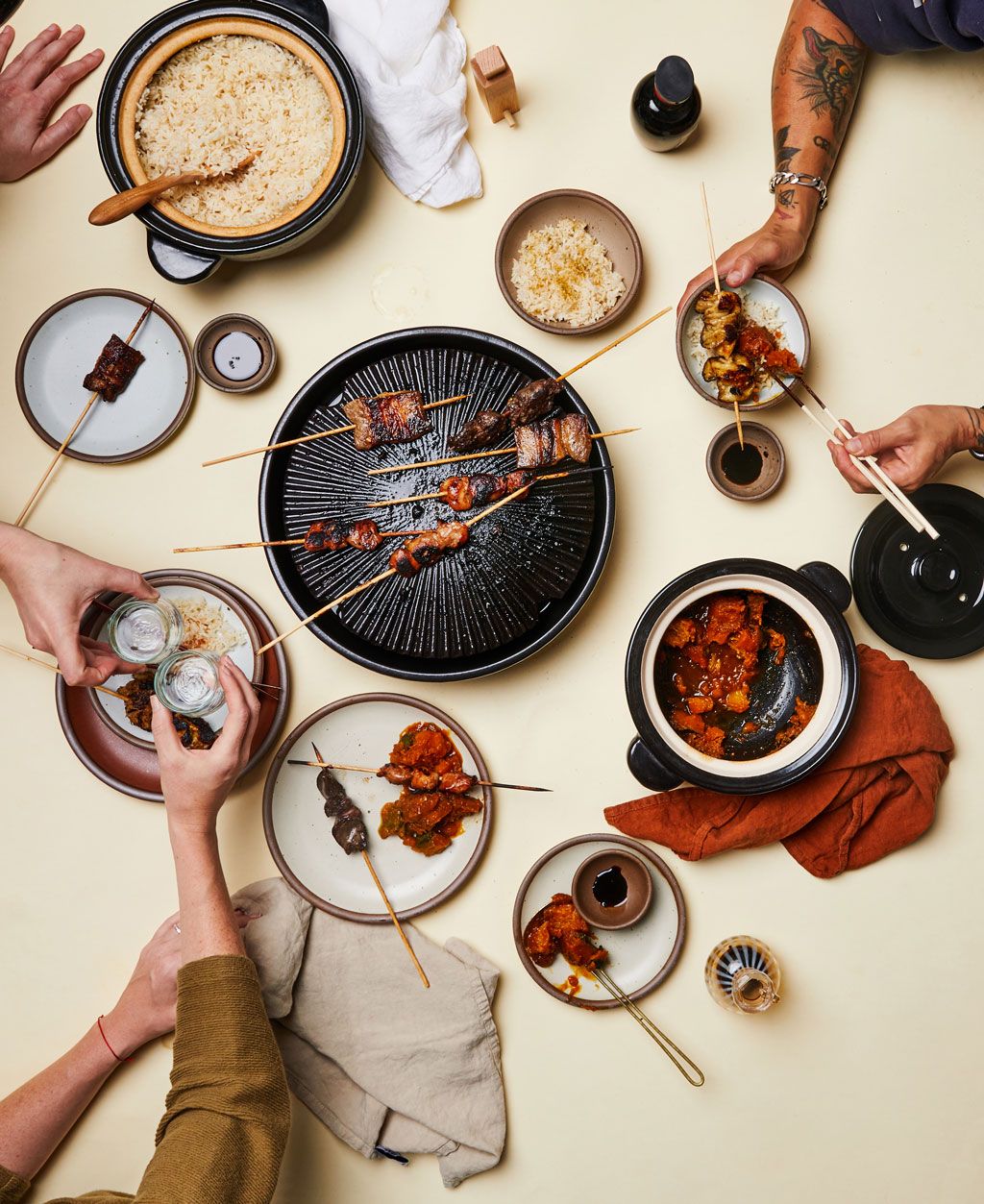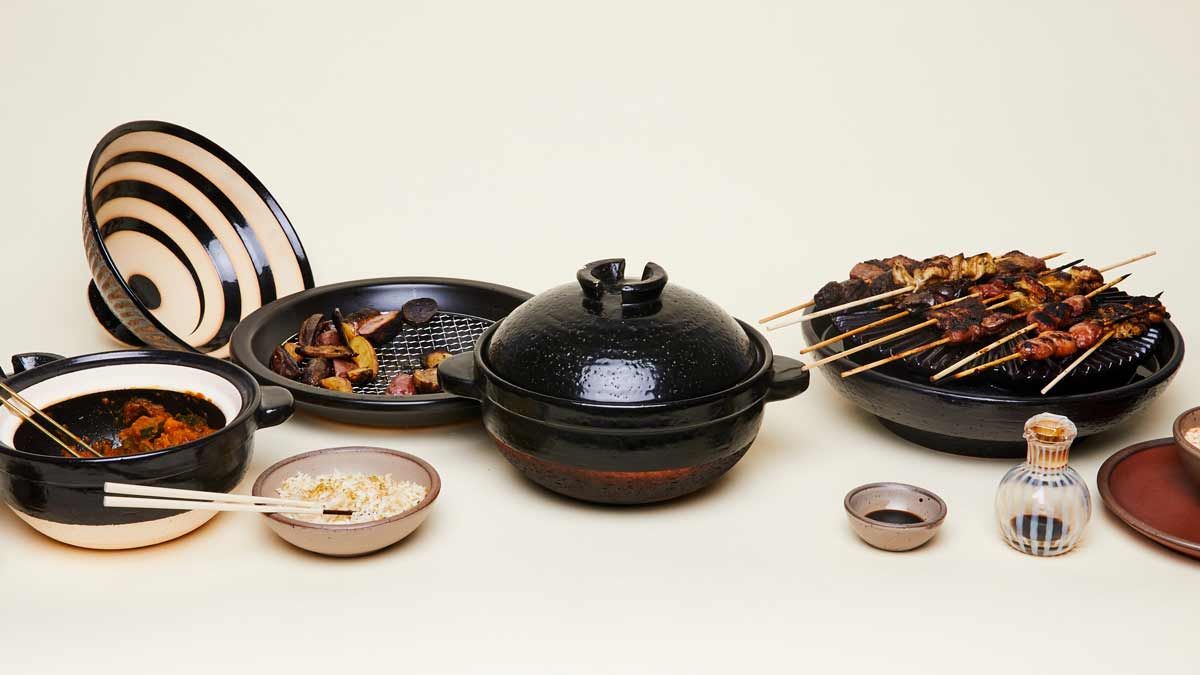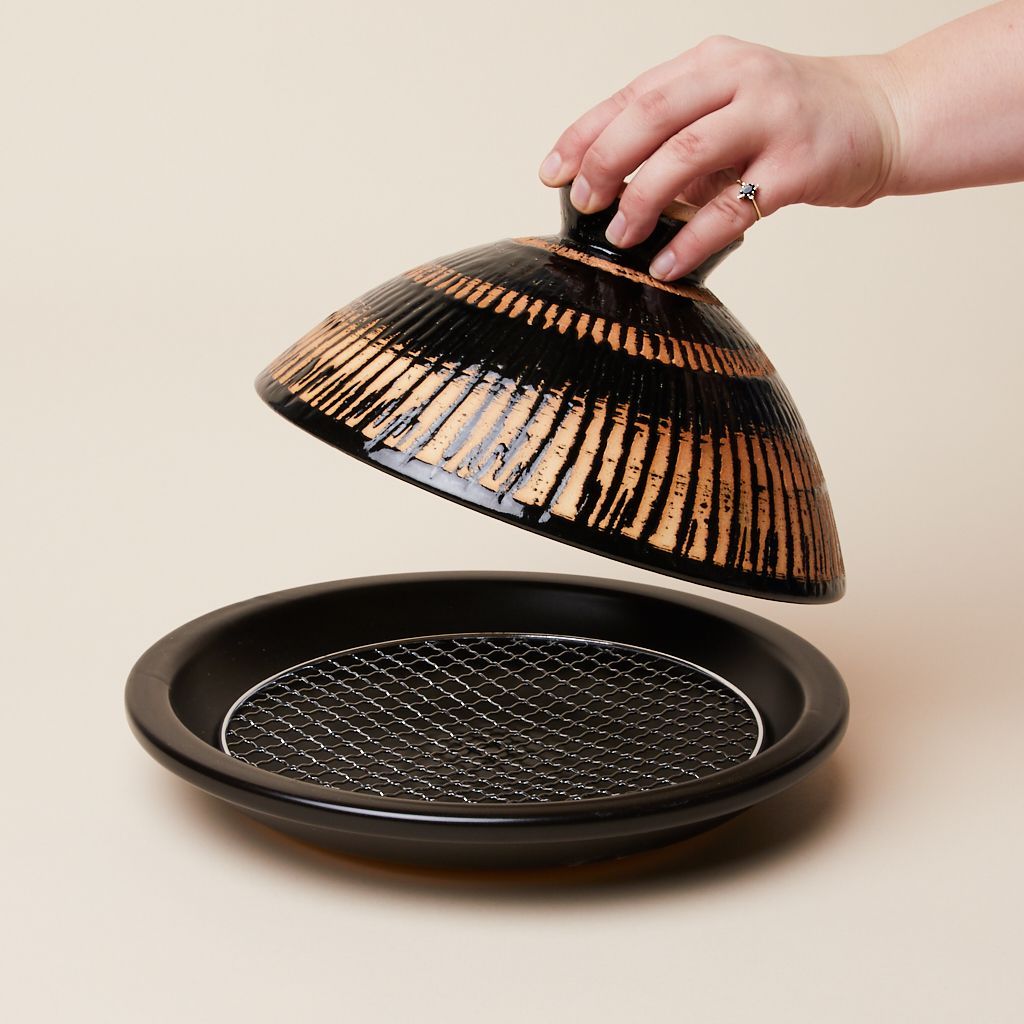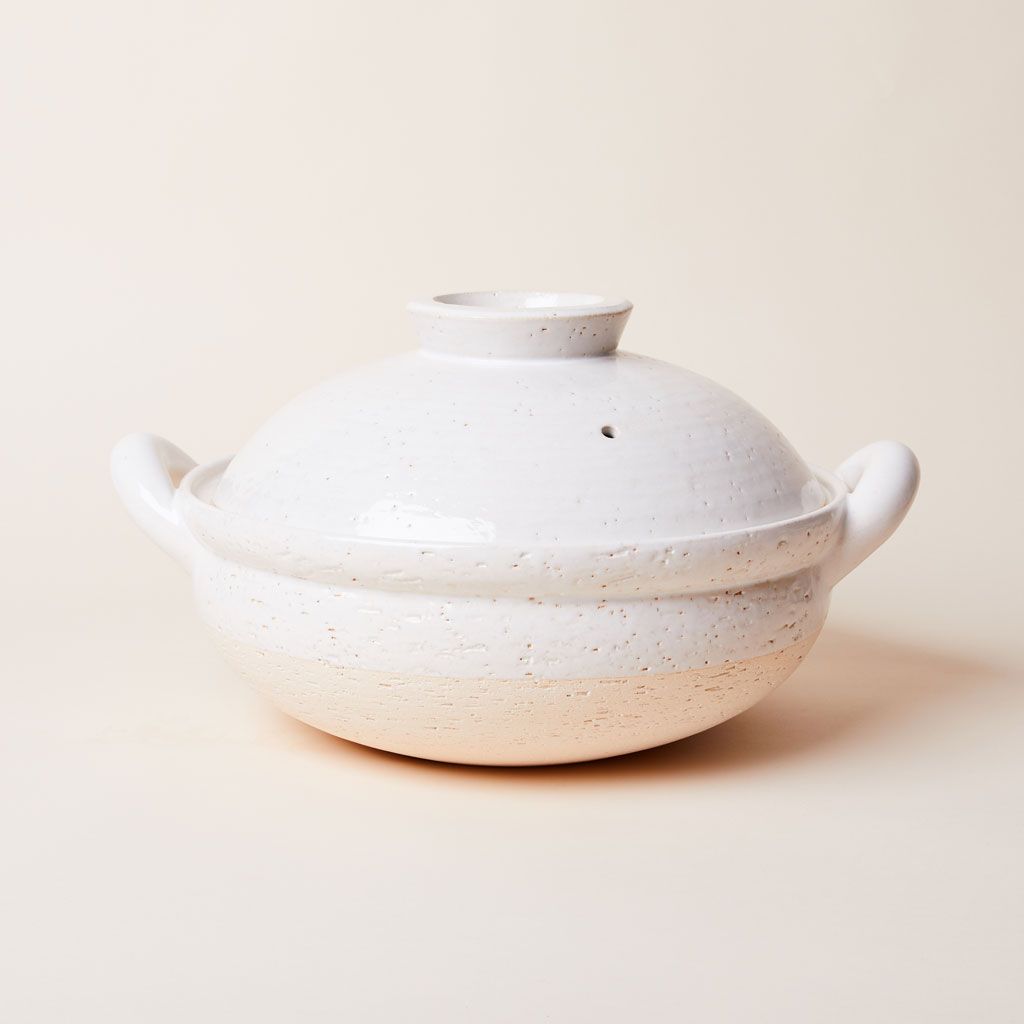
All Things Donabe
Donabe (doh-NAH-bay) is traditional Japanese earthen cookware so versatile that even now, centuries after its creation, almost every household in Japan has at least one of them. It’s also a hallmark of omotenashi, an approach to hospitality that is sincere, loving, authentic. Omote means “public face,” or how you want people to see you. Nashi is nothing.
Combined, they mean serving from the bottom of the heart: honest, no hiding, no pretending.
Omotenashi is an expression of love, not dazzlement on the part of the host. It’s entertaining that makes your guests feel at home because they sense that you didn’t stress about having them over because, well, you didn’t. It’s the antithesis of the times when the host stays in the kitchen, making intimidating dishes, plating like a champion but not sitting down until the dessert course, and, even then, never really relaxing.
We put together a collection of Japanese kitchenware and pantry items that embrace this spirit of easy hospitality.

Nagatani-en Donabe
Donabe—the term describes both the cooking vessel and the dishes it makes—are an embodiment of omotenashi. For one thing, with a portable butane stove, you can bring your donabe right to the table. They cook meat, fish, tofu, rice and vegetables perfectly, succulently, because of their design, which you’ll read about below, and because of the materials with which they are made.
The clay used to make the Nagatani-en donabe we sell at East Fork comes from earth that was once the bed of Japan’s pre-historic Lake Biwa. High concentration of fossilized microorganisms in this particular clay burn away in kiln firings, leaving minute holes in the clay. This coarse, porous clay gives donabe their excellent heat retention. The glaze on the exterior of the vessels promotes far infrared rays (FIR), which may sound unfamiliar but compares to how charcoal cooks things long after the flames have been extinguished. This is how donabe cook with a gentle, steady heat that seals in flavor.
In short, food tastes more delicious. And because donabe retain their heat so well, they make excellent (and beautiful) serving pieces. With long-time use, donabe take on the flavors of what’s been cooked in them and also gain lovely, distinctive character. The cycle of heating and cooling of an oft-used donabe causes tiny, superficial cracks to form in the glaze. These cracks, called kannyu, strengthen the clay by giving it more room to expand and contract when used. And, over time, the bottom part of donabe will darken. It’s all part of the charm.
Founded in 1832, Nagatani-en makes donabe by hand for professionals and home cooks. Making a donabe is a two-week process in which each piece is fired twice at extremely high temperatures, which reminds us of our own process here at East Fork. Donabe made by Nagatani-en are an investment, to be sure, but the quality and craft set them apart from mass-market versions.
Types of Donabe
Donabe are multi-taskers, so you don’t need to buy one of each style. Think about how you cook, what you cook most often and where you want a donabe to fit into your kitchen equation.
Fukkura-san

The Fukkura-san is a tagine-style donabe used for stir-frying, steaming, roasting and stewing. Fukkura means “fluffy” because what it cooks gets tender and, yes, fluffy. Its skillet-like base is called a toban and makes for excellent pan-frying and sautes. Add the grate for roasting right on the cooktop. .
Let’s talk about steam. The dome-shaped lid has no hole: steam circulates but doesn’t escape but instead condenses back into liquid, adding a bit more moisture to the ingredients as they cook. If you want even more steam, before you start cooking, fill the lid with water and let it sit for a few minutes before draining.
While we’re on the subject of fukkura-san lids, they make lovely serving pieces when turned over and stood on their base. Not cooking fluffy meats and fish today? Are you more in a cold noodles mood? Use your fukkura-san as a tabletop refrigerator. It’s simple: fill the toban with water and let it sit for a few minutes. Empty the water out and fill the toban with ice, then place your noodles or whatever else you are serving cold right on the ice or on a plate atop the ice.
Mushi Nabe

How do you steam vegetables and meats without steaming the flavor right out of them? Use the Mushi Nabe to quickly and thoroughly cook them with steam and far infrared rays (FIR). Fill 70% of the bottom part of the donabe with water. Set the grate in place and cover with the lid. Bring to a boil, then carefully remove the lid, arrange ingredients on the grate, put the cover back on and steam until everything is cooked.
You can also use the Mushi Nabe to keep things cold. Just soak all the parts in water, empty them and pat them dry. Don’t skip this step. Fill the base with ice, put the grate in place, and add more ice and the food you want to keep cold. We’re thinking maybe sashimi, fresh vegetables with dip, fruit salad? When you place the lid back on the Mushi Nabe, the inside becomes insulated with cold air and stays cold because as the moisture from the water evaporates, the spent energy cools the donabe down. How cool is that? No, really.
Yaki Yaki San
This smokeless grill works like a hearth—slowly building consistent heat that lasts but doesn’t make the grill too hot. Grill whatever you like, indoors, and even at your table if you have a portable butane stove. And, there’s even a solution to the age-old problem of fats and oils dripping through the grill onto the fire: the outer reservoir, when filled with water, acts as a drip pan.
To use, fill the outer reservoir with water to about 80%. Set the top grill in place. On a gas stove top, heat the grill for five minutes on high, then turn down to medium. Brush with oil to prevent ingredients from sticking. If you plan to use the yaki yaki-san for a longish cooking session, be ready to refill the water and wipe the grill with a wet paper towel before cooking more things.
Kamado-San
Kamado-sans will make the most perfect rice: toothsome, sticky, fluffy, shiny, bursting with natural sweetness, the best. Thank the double-thick clay walls that cook the grains evenly and the double-lid that works like a pressure cooker and keeps the contents from boiling over. Don’t stop at rice. Farro, quinoa, wheat berries and many other grains cook great in a kamado-san.
And while you’re thanking the other components, also thank the inner lid for being removable. You now have a cooking vessel to make all the hot pots, shabu-shabu soups, stews and braised dishes.
The kamado-san’s versatility may account for its ubiquity in both home kitchens and restaurants in Japan, where you might see these donabe used for rice service at each table. No matter what you cook in your kamado-san, the vessel is a beautiful addition to the table, and like the other donabe styles, keeps food hot for a long time.
Caring For Your Donabe
Season Your Donabe
Fukkura-sans and yaki yaki-sans don’t need to be seasoned before first use, but all other donabe do. It’s easy! Just make their maiden voyage in your kitchen a simple and tasty rice porridge:
1. First, make sure the outer bottom of the donabe is dry. Fill the inside with water to about 70% capacity, add cooked rice, making sure at least ⅕ of the volume is rice. Stir well.
2. Cover with lid and cook over medium-low heat until mixture comes to a simmer, then carefully uncover (lid will be hot) and lower the heat.
3. Cook until the mixture becomes paste-like, stirring occasionally to keep the rice at the bottom from burning. Turn off the heat and cool for an hour.
4. Remove the rice mixture, rinse the donabe and let it dry completely before next use.
No Dishwashers, Please.
Always hand-wash your donabe. Forget the dishwasher here. Use mild soap and a sponge and be sure not to let the donabe sit in soapy water because it could take on the scent of the soap.
Keep it cool, keep it dry
Let your donabe cool before plunging it into water to prevent cracks.
Dry your donabe components well, and let them sit upside down overnight before you put them away. Where to store? Somewhere dry is best. High humidity can bring on mold.
Don’t use your donabe for food storage. After many hours, the clay may absorb the smell of the food.
